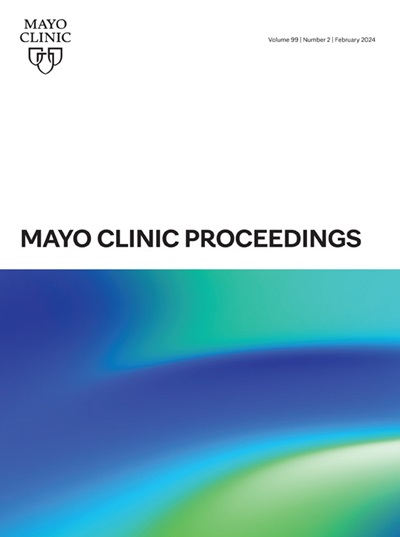Midwest Urban-Rural Differences in Cancer Prevalence
IF 6.9
2区 医学
Q1 MEDICINE, GENERAL & INTERNAL
引用次数: 0
Abstract
Objective
To assess differences in cancer prevalence across the urban-rural continuum, which may help identify target areas for cancer treatment and prevention efforts.
Methods
We identified residents of a 27-county region of Minnesota and Wisconsin on January 1, 2020, using the Rochester Epidemiology Project. Rural-urban commuting area classifications were used to categorize addresses as urban core, large town, small town, or isolated rural. Diagnostic codes were extracted from the 4 years prior. Codes were grouped into cancer types by Clinical Classifications Software Refined categories. Logistic regression models were used to estimate the effect of rurality on cancer prevalence. Analyses were stratified by rurality, directly standardized by age and sex to the total 2020 US population using survey sampling weights and analytically adjusted by including indicator variables for non-White race, Hispanic ethnicity, and smoking status.
Results
We found a higher prevalence of Hodgkin lymphoma among isolated rural residents compared with urban residents (odds ratio [OR], 1.77; 95% CI, 1.28 to 2.44). In addition, men in large towns had a higher prevalence of throat cancer compared with urban men (OR, 1.57 [1.03 to 2.39]). Rural women had a higher prevalence of colorectal (large town: OR, 1.32 [1.12 to 1.55]; small town: OR, 1.23 [1.00 to 1.53]), anal (isolated rural: OR, 2.22 [1.27 to 3.88]), and ovarian (large town: OR, 1.40 [1.09 to 1.78]) cancer compared with women residing in urban areas.
Conclusion
Our findings underscore the importance of moving beyond the simple urban-rural dichotomy to address cancer disparities.
中西部地区癌症患病率的城乡差异
目的:评估城乡之间癌症患病率的差异,这可能有助于确定癌症治疗和预防工作的目标区域。方法:我们使用罗切斯特流行病学项目,于2020年1月1日确定了明尼苏达州和威斯康星州27个县地区的居民。使用城乡通勤区域分类将地址分类为城市核心、大城镇、小城镇或孤立的农村。从4年前提取诊断代码。通过临床分类软件细化分类将编码分组为癌症类型。使用Logistic回归模型来估计乡村性对癌症患病率的影响。分析按农村地区分层,使用调查抽样权重直接按年龄和性别对2020年美国总人口进行标准化,并通过纳入非白人种族、西班牙裔种族和吸烟状况的指标变量进行分析调整。结果:我们发现孤立农村居民的霍奇金淋巴瘤患病率高于城市居民(优势比[OR], 1.77;95% CI, 1.28 ~ 2.44)。此外,大城市男性咽喉癌患病率高于城市男性(OR, 1.57[1.03 ~ 2.39])。农村妇女结直肠患病率较高(大城镇:OR, 1.32 [1.12 ~ 1.55];小城镇:OR, 1.23[1.00至1.53]),肛门癌(孤立农村:OR, 2.22[1.27至3.88])和卵巢癌(大城镇:OR, 1.40[1.09至1.78])。结论:我们的研究结果强调了超越简单的城乡二分法来解决癌症差异的重要性。
本文章由计算机程序翻译,如有差异,请以英文原文为准。
求助全文
约1分钟内获得全文
求助全文
来源期刊

Mayo Clinic proceedings
医学-医学:内科
CiteScore
16.80
自引率
1.10%
发文量
383
审稿时长
37 days
期刊介绍:
Mayo Clinic Proceedings is a premier peer-reviewed clinical journal in general medicine. Sponsored by Mayo Clinic, it is one of the most widely read and highly cited scientific publications for physicians. Since 1926, Mayo Clinic Proceedings has continuously published articles that focus on clinical medicine and support the professional and educational needs of its readers. The journal welcomes submissions from authors worldwide and includes Nobel-prize-winning research in its content. With an Impact Factor of 8.9, Mayo Clinic Proceedings is ranked #20 out of 167 journals in the Medicine, General and Internal category, placing it in the top 12% of these journals. It invites manuscripts on clinical and laboratory medicine, health care policy and economics, medical education and ethics, and related topics.
 求助内容:
求助内容: 应助结果提醒方式:
应助结果提醒方式:


